|
The Jewels of Bryn Athyn
by Bob
Brooke
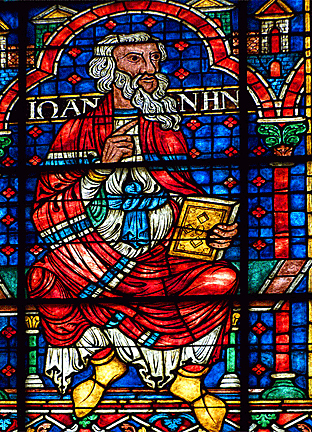 Set
in the northern suburbs bordering the City of Philadelphia lies Bryn
Athyn, a quiet Pennsylvania town and home to a magnificent
Gothic-style cathedral. Within its confines are jewels the likes of
which haven’t been seen since the Middle Ages—its stained glass
windows. Set
in the northern suburbs bordering the City of Philadelphia lies Bryn
Athyn, a quiet Pennsylvania town and home to a magnificent
Gothic-style cathedral. Within its confines are jewels the likes of
which haven’t been seen since the Middle Ages—its stained glass
windows.
The origins of the art of stained glass dates from the 12th and 13th
century. Back then the largest buildings were the churches and
cathedrals. Workers in the fields could see their mighty towers
thrusting up above the landscape and turned to them to say their
prayers. But once inside, the people were transported to a heavenly
world, filled with colored light as the sun streamed through the
pieces of colored glass.
The construction of Bryn Athyn Cathedral in a combination of Gothic
and Romanesque styles necessitated the study of the lost art of
Medieval stained glass.

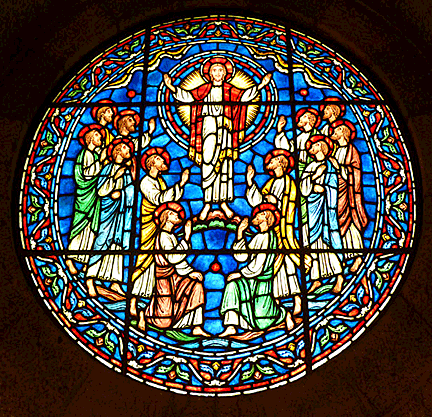 Although
the cathedral’s windows took on the form of famous medieval European
cathedrals like Chartres in France, they contained symbolism inspired by
New Church beliefs as found in the Bible and the writing of Emanuel
Swedenborg. The purpose of symbolism in religious art is "to bring the
Lord present in worship, that He may be present not only through the
sense of hearing but also through the sense of sight." Although
the cathedral’s windows took on the form of famous medieval European
cathedrals like Chartres in France, they contained symbolism inspired by
New Church beliefs as found in the Bible and the writing of Emanuel
Swedenborg. The purpose of symbolism in religious art is "to bring the
Lord present in worship, that He may be present not only through the
sense of hearing but also through the sense of sight."
The Bryn Athyn Glass Studio
By 1913, Bryn Athyn Cathedral slowly began to dominated the local
skyline. With masons and sculptors already hard at work on the structure
itself, Raymond Pitcairn, son of John Pitcairn, turned his attention to
the stained glass windows he hoped would illuminate the cathedral's
interior. Pitcairn's goal was to match the textures and brilliant colors
of the stained glass found in the great medieval cathedrals of the 12th
and 13th centuries.
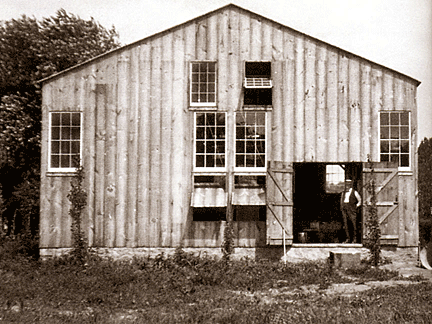 Unfortunately,
the arcane chemical formulas and hand-blown techniques used by medieval
glassmakers had long since been abandoned by the glass factories of
industrialized America. Perpetually dissatisfied with the quality of the
available commercial glass, in 1915 Pitcairn hired local artists to
experiment with re-melting commercial glass over a bed of sand and
pebbles in an effort to recreate the irregular textures that give
medieval glass so much of its beauty. The experiments were a failure,
but these humble attempts to imitate the special qualities of medieval
glass marked the beginning of a quest that lasted tar the next decade. Unfortunately,
the arcane chemical formulas and hand-blown techniques used by medieval
glassmakers had long since been abandoned by the glass factories of
industrialized America. Perpetually dissatisfied with the quality of the
available commercial glass, in 1915 Pitcairn hired local artists to
experiment with re-melting commercial glass over a bed of sand and
pebbles in an effort to recreate the irregular textures that give
medieval glass so much of its beauty. The experiments were a failure,
but these humble attempts to imitate the special qualities of medieval
glass marked the beginning of a quest that lasted tar the next decade.
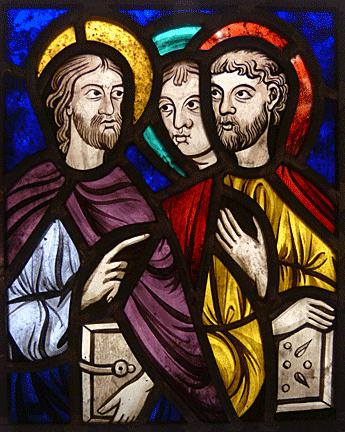 In
1921, Pitcairn purchased 23 panels of medieval stained glass at an
auction from the renowned collection of Henry- C. Lawrence. He intended
these panels were intended as a source of information and inspiration
for the growing number of artists and craftsmen he was employing in his
quest to rediscover the techniques of medieval glassmakers. In
1921, Pitcairn purchased 23 panels of medieval stained glass at an
auction from the renowned collection of Henry- C. Lawrence. He intended
these panels were intended as a source of information and inspiration
for the growing number of artists and craftsmen he was employing in his
quest to rediscover the techniques of medieval glassmakers.
As progress continued on the cathedral, Pitcairn expanded his medieval
glass purchases; in time his collection grew to include more than 260
panels.
In 1922, Raymond Pitcairn established a factory for producing stained
glass across the street from the cathedral. The windows were designed
and painted in a makeshift studio set up in Cairnwood's garden house. By
the time the glass factory closed in 1942, it had produced glass for all
of the windows in Bryn Athyn Cathedral, as well as stained glass and
glass mosaic for Glencairn, Pitcairn's own home. Bryn Athyn's stained
glass artists continued producing windows for the cathedral into the
1960s.
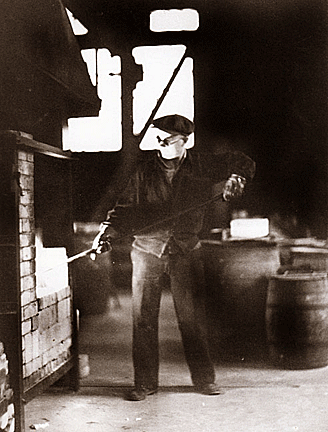 In
1916, Raymund Pitcairn met John A. Larson, a Swedish immigrant descended
from a family of master glassblowers. Larson had set up his own glass
factory in New York City, and Pitcairn employed him to conduct
experiments in replicating medieval glassmaking techniques. In an effort
to duplicate the original colors and textures, Larson studied medieval
stained glass collections in New York City and later Pitcairn's own
collection. Pitcairn built his own stained glass factory just across the
road from Bryn Athyn Cathedral. The factory made its first batch of
glass on July 5, 1922, and Larson stayed on to manage the operation
until 1925. In
1916, Raymund Pitcairn met John A. Larson, a Swedish immigrant descended
from a family of master glassblowers. Larson had set up his own glass
factory in New York City, and Pitcairn employed him to conduct
experiments in replicating medieval glassmaking techniques. In an effort
to duplicate the original colors and textures, Larson studied medieval
stained glass collections in New York City and later Pitcairn's own
collection. Pitcairn built his own stained glass factory just across the
road from Bryn Athyn Cathedral. The factory made its first batch of
glass on July 5, 1922, and Larson stayed on to manage the operation
until 1925.
Assisting John Larson at the factory were David Smith, a Swedish
glassblower whom Larson had brought from his New fork factory, and Ariel
C. Gunther, a member of the New Church congregation in Bryn Athyn who
had been hired as an apprentice. Only 19 years old when he began the
work, Gunther was closely involved in the experiments that took place
during Larson's tenure at the factory. When Larson left the project in
1925, Gunther took over management of the factory and continued to
perfect the color formula.
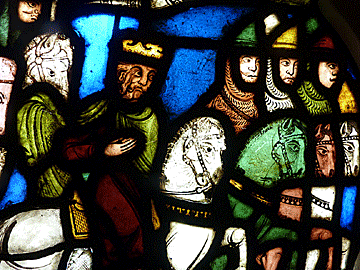 Ariel
Gunther mixed together ingredients for glassblowing in the glass
factory. Medieval stained glass and the variety of ;glass made in Bryn
Athyn is known as "pot metal" glass. The three main ingredients—sand,
sodium carbonate, and lime produce a clear glass when melted at high
temperatures. Craftsmen achieved the colors by introducing metallic
oxides such as iron, copper, gold, and silver in various ratios and
quantities. Ariel
Gunther mixed together ingredients for glassblowing in the glass
factory. Medieval stained glass and the variety of ;glass made in Bryn
Athyn is known as "pot metal" glass. The three main ingredients—sand,
sodium carbonate, and lime produce a clear glass when melted at high
temperatures. Craftsmen achieved the colors by introducing metallic
oxides such as iron, copper, gold, and silver in various ratios and
quantities.
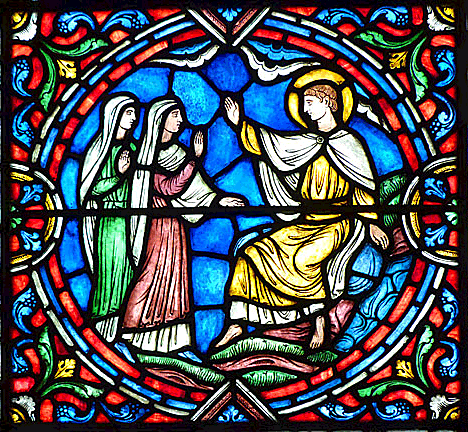 The
temperature in the furnace and the length of firing time were extremely
important. Certain colors require a hot, fast tire, while others are
melted at lower temperatures for a longer period of time. The process of
blowing glass began when a glass blower wound a large "gather" of molten
glass onto the end of a "blowpipe." The
temperature in the furnace and the length of firing time were extremely
important. Certain colors require a hot, fast tire, while others are
melted at lower temperatures for a longer period of time. The process of
blowing glass began when a glass blower wound a large "gather" of molten
glass onto the end of a "blowpipe."
Workers in the Bryn Athyn glass factory perfected two principal methods
of glassblowing—the cylinder method and the rondel method. While the
cylinder method provided more square inches of glass, the rondel method
was useful for its distinctive optical qualities.
Early in the work of preparing for Bryn Athyn Cathedral's stained glass
windows, Raymond Pitcairn enlisted the help of Winfred S. Hyatt, a young
art student from a New Church family. Even as he pursued his studies,
Pitcairn chose Hyatt to be a member of the cathedral's symbolism
committee, charged with developing the subject matter for the
cathedral's stained glass windows and sculptures.
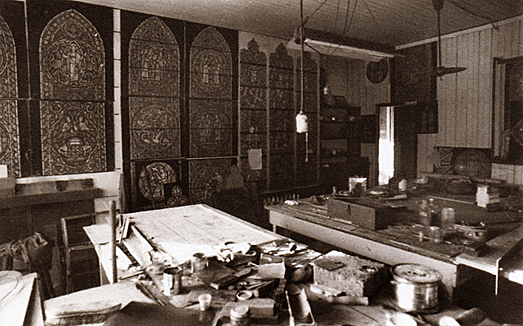
He also put in charge of the stained
glass studio in Cairnwood's garden house Hyatt, who worked on designs
for windows as early as 1915. He produced hundreds of original cartoons
and sketches and did most of the glass painting on the final windows.
Hyatt continued doing this until he died in 1959.
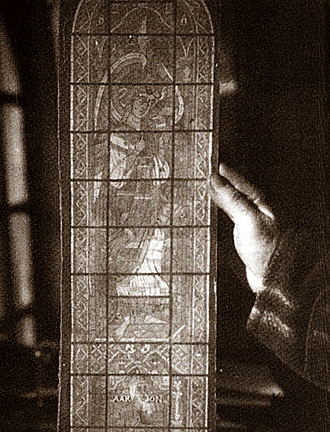 Artists
used a scale watercolor design, adapted from a stained glass window in
Chartres Cathedral in France, was used in the creation of the central
lancet window in the north wall of Glencairn's great hall. Each stained
glass window made for Bryn Athyn Cathedral and Glencairn went through a
meticulous design process—from sketch, to scale version in watercolors,
to full-sized cartoon—craftsmen cut the glass and assembled the window. Artists
used a scale watercolor design, adapted from a stained glass window in
Chartres Cathedral in France, was used in the creation of the central
lancet window in the north wall of Glencairn's great hall. Each stained
glass window made for Bryn Athyn Cathedral and Glencairn went through a
meticulous design process—from sketch, to scale version in watercolors,
to full-sized cartoon—craftsmen cut the glass and assembled the window.
The subject matter of the cathedral windows first had to be finalized by
the symbolism committee, a process which in itself could take a great
deal of time. The artists submitted preliminary pencil sketches which
the members of the committee evaluated until they chose one to use.
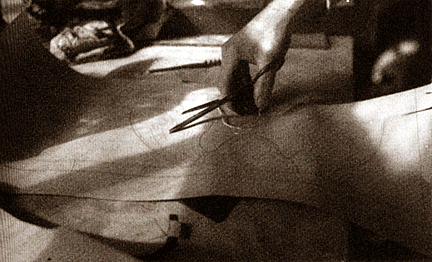 After
the committee finalized the design of a window, another artist would
trace the full-sized painted drawing, which included lead lines, onto
heavy brown paper. He would then cut up the tracing into individual
pieces with a special pair of shears that reduced the size of each piece
to account for the width of the leads so the window would he the correct
size when assembled. He then matched each piece of paper to a panel of
glass of the appropriate color. Each hand-blown panel produced in the
Bryn Athyn factory was individual in tone and texture, making it
possible for the artist to select the appropriate piece of glass as
required by the design. After
the committee finalized the design of a window, another artist would
trace the full-sized painted drawing, which included lead lines, onto
heavy brown paper. He would then cut up the tracing into individual
pieces with a special pair of shears that reduced the size of each piece
to account for the width of the leads so the window would he the correct
size when assembled. He then matched each piece of paper to a panel of
glass of the appropriate color. Each hand-blown panel produced in the
Bryn Athyn factory was individual in tone and texture, making it
possible for the artist to select the appropriate piece of glass as
required by the design.
Raymond Pitcairn hired Lawrence B. Saint to design and paint windows and
also to conduct research and experimental murk. Saint worked on the Bryn
Athyn project from 1917 until 1928, when he left to begin work on the
National Cathedral in Washington, D.C. where he served as director of
the stained glass department.
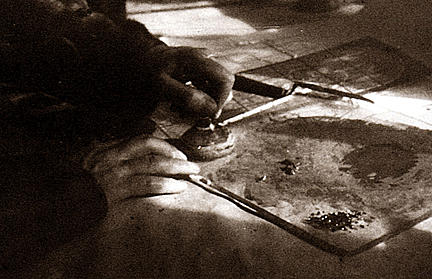 The
glass paint used to create the faces and other details in medieval
stained glass was something of a chemical mystery. After much
experimentation, Lawrence Saint developed his own paint formula. He
melted glass frit and metallic oxide together in a tiny porcelain
crucible using an electric furnace. Saint then crushed the mixture to
produce a powdered glass paint. He used a glass grinder, known as a
"mullet," to mix the glass paint with a liquid so it could be applied
with a paintbrush. The
glass paint used to create the faces and other details in medieval
stained glass was something of a chemical mystery. After much
experimentation, Lawrence Saint developed his own paint formula. He
melted glass frit and metallic oxide together in a tiny porcelain
crucible using an electric furnace. Saint then crushed the mixture to
produce a powdered glass paint. He used a glass grinder, known as a
"mullet," to mix the glass paint with a liquid so it could be applied
with a paintbrush.
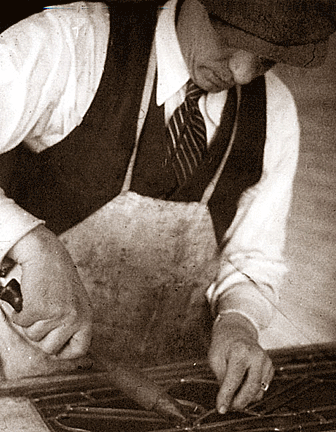 The
Bryn Athyn artists carefully painted on the faces, hands, feet, and
other details once they cut the pieces of glass. Next, they fired the
pieces in a small electric kiln, bonding the paint to the glass.
Pitcairn originally hired Albert E. Cullen, horn in England, to make
tracings and paintings of windows at Canterbury, Chartres, and other
cathedrals. In 1928, he came to America to work for the Bryn Athyn
stained glass studio. The
Bryn Athyn artists carefully painted on the faces, hands, feet, and
other details once they cut the pieces of glass. Next, they fired the
pieces in a small electric kiln, bonding the paint to the glass.
Pitcairn originally hired Albert E. Cullen, horn in England, to make
tracings and paintings of windows at Canterbury, Chartres, and other
cathedrals. In 1928, he came to America to work for the Bryn Athyn
stained glass studio.
The glazier cut out individual nieces of glass using a glass cutter. He
then assembled the various elements of the window with pieces of lead.
The studio purchased lead "came," shaped like an I-beam, in six-hoot
lengths. The came had a channel on each side for the glass to fit into.
Once artisans assembled the glass with the came, they soldered the
joints on both sides of the window. Next, in order to make the window
weatherproof, they lifted up the edges of the leading and poured a
special putty onto the glass and scrubbed it into the spaces. The leads
were then pressed down and the putty was allowed to set before they
mounted the window in its final space in the cathedral or in Pitcairn’s
home, Glencairn.
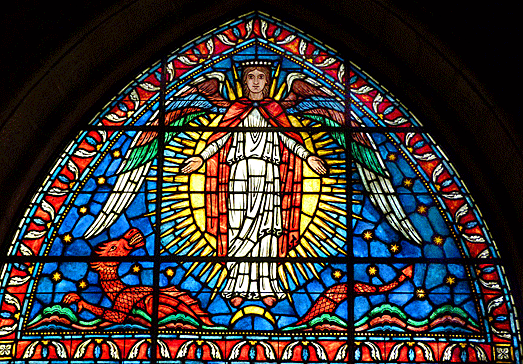
This window, located above Bryn Athyn Cathedral's north portal depicts
the biblical characters Adam, Noah, the woman clothed with the sun, from
the Book of Revelation 12.1, John the Evangelist, and Aaron.
Abbot Suger, of the Abbey Church of St. Denis In France, had expounded a
theory of "divine light." Suger viewed the sunlight streaming through
the walls of colored glass as symbolic of the heavenly light and a means
to union with God.
<
Back to More Antiques to View
Next Article > |
